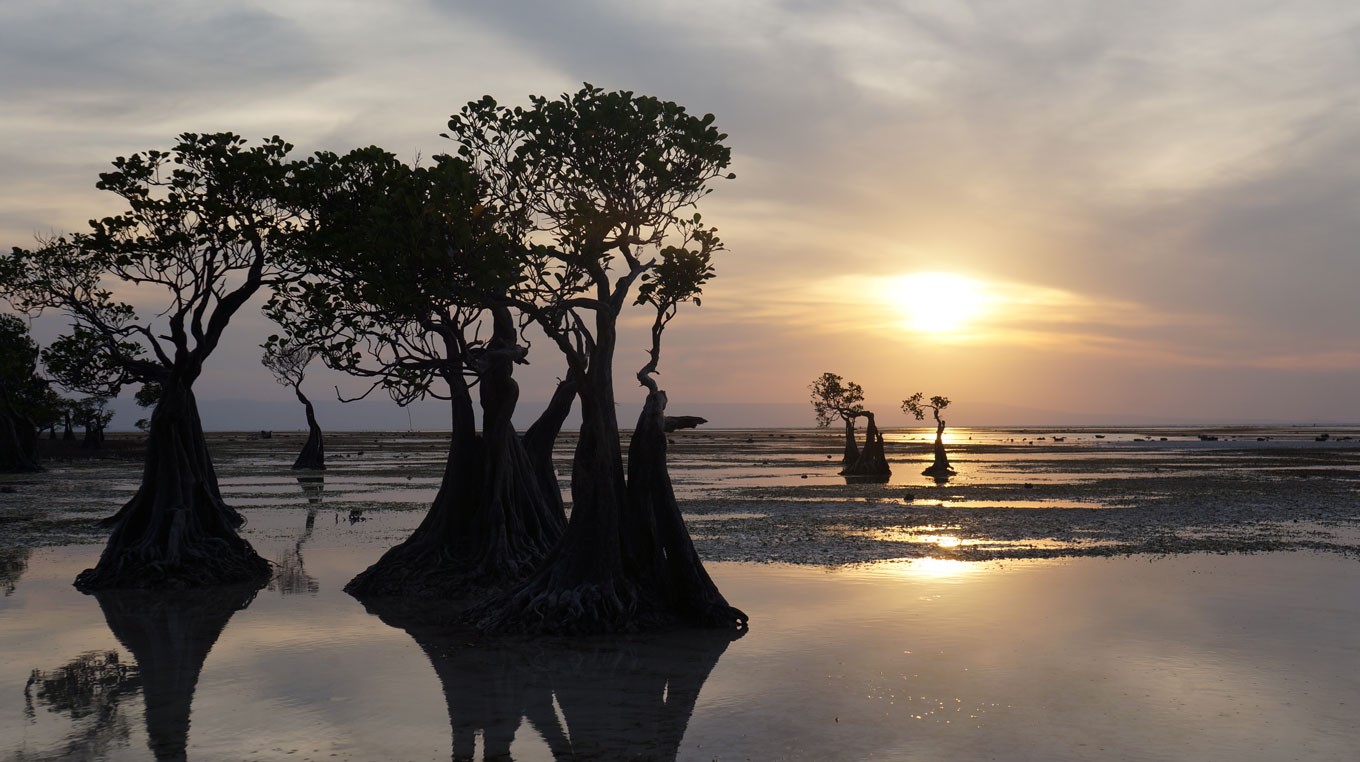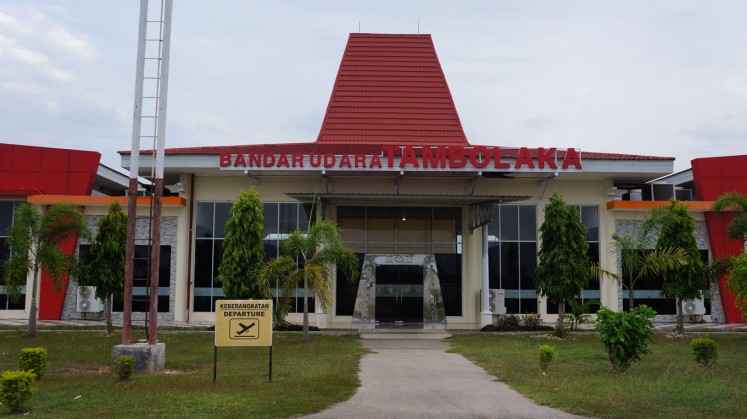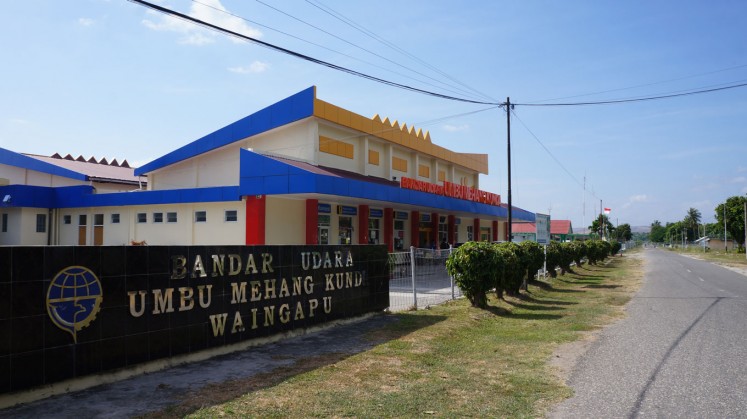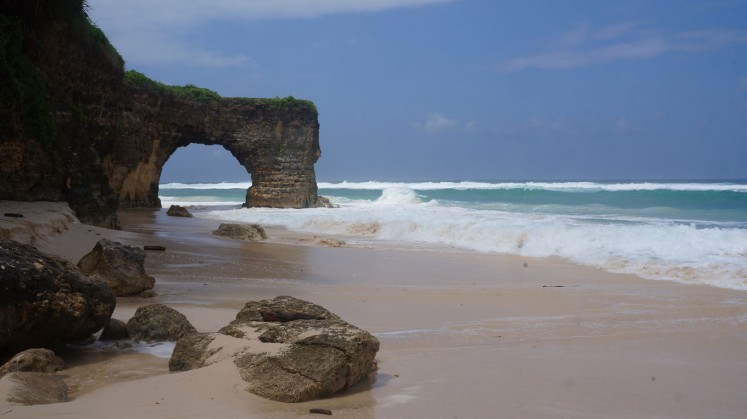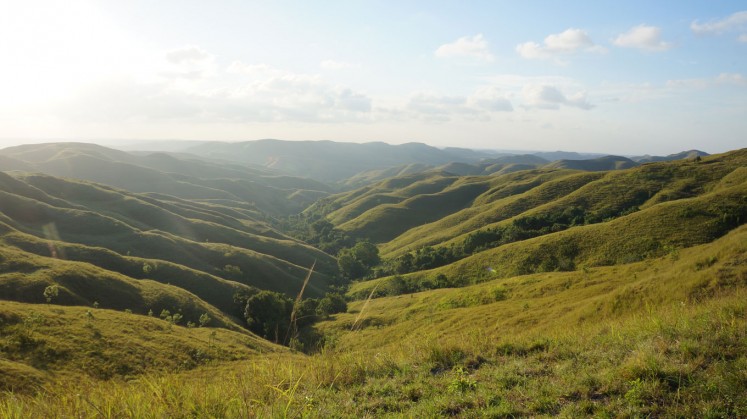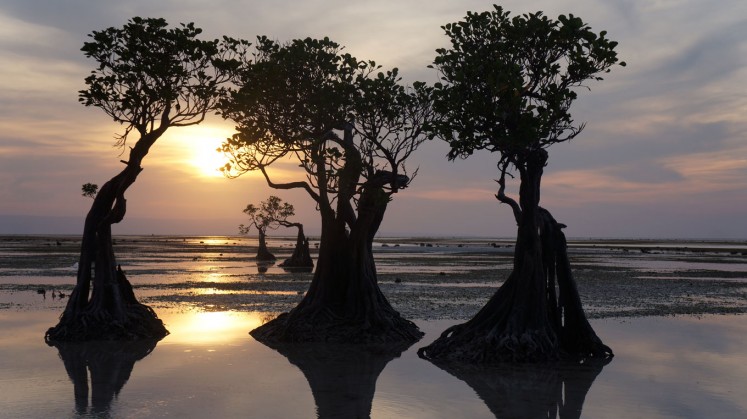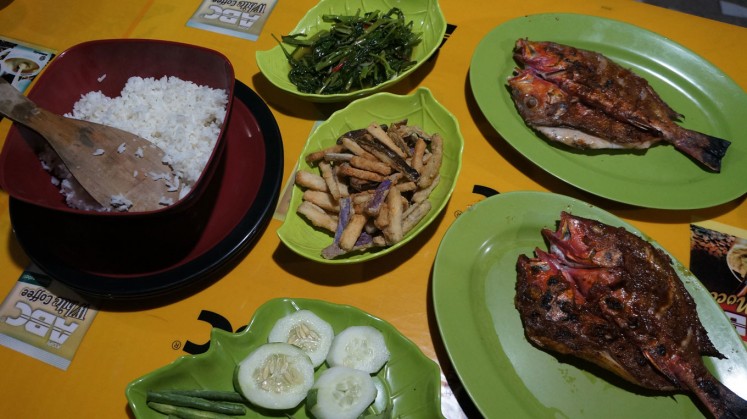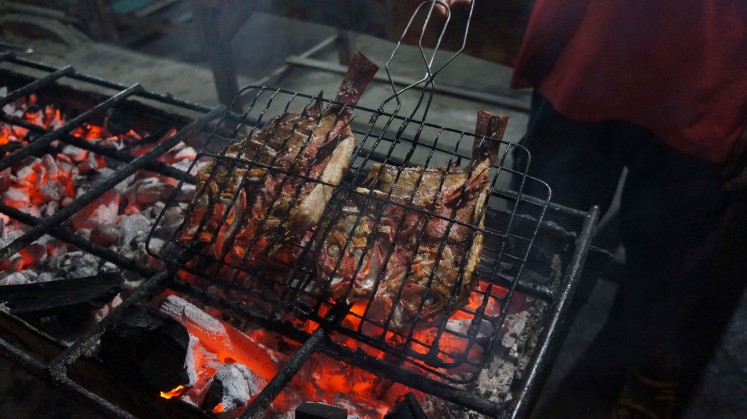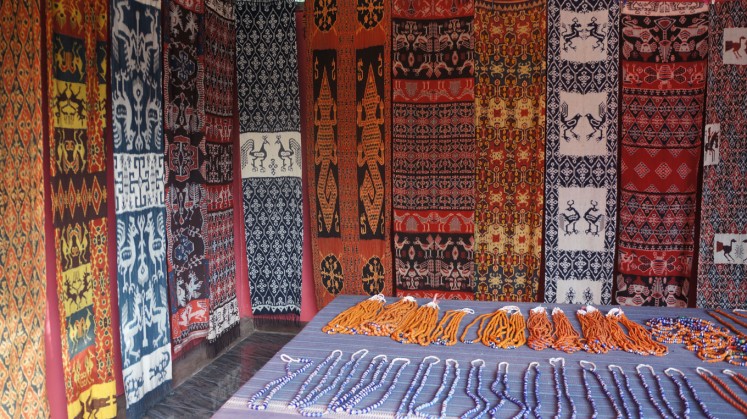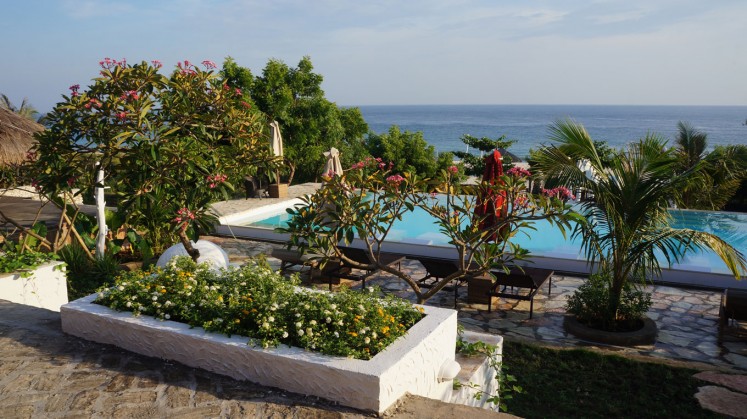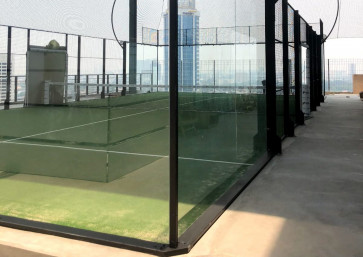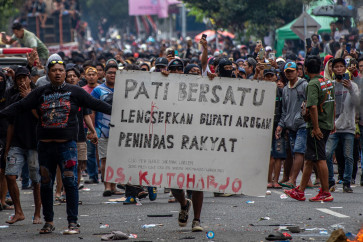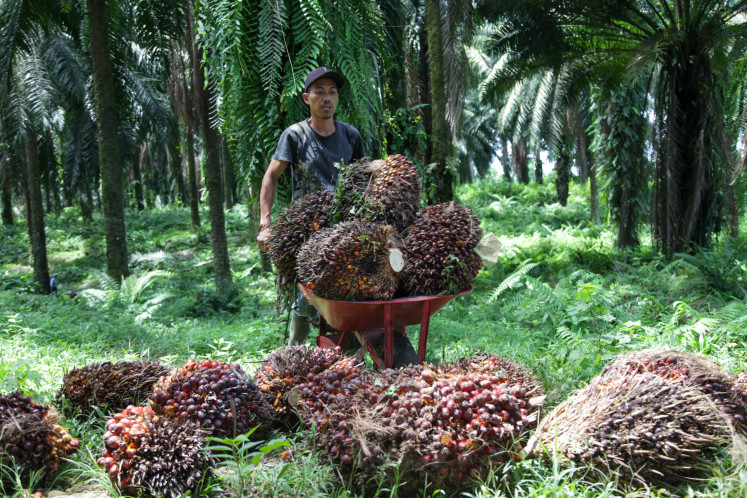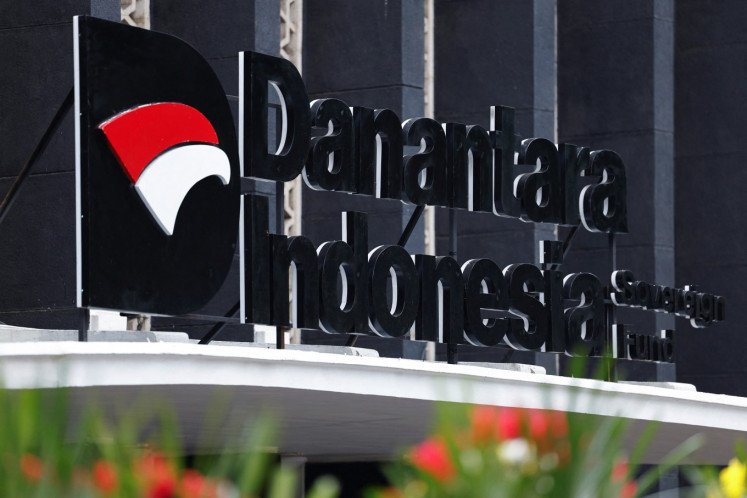Popular Reads
Top Results
Can't find what you're looking for?
View all search resultsPopular Reads
Top Results
Can't find what you're looking for?
View all search resultsJakpost explores Sumba
The island of Sumba in East Nusa Tenggara is known for its fascinating tribal culture, unique megalithic tombs and distinct landscapes.
Change text size
Gift Premium Articles
to Anyone
The island of Sumba in East Nusa Tenggara is known for its fascinating tribal culture, unique megalithic tombs and distinct landscapes.
Tucked away in Indonesia’s east, many parts of the island are still mostly untouched by modern civilization, affording visitors a vivid glimpse into ancient history.
Read also: Jewels of Sumba
How to get there
By air
Sumba has two airports, one in the western end of the island and the other in the east. Both airports have daily connections with Jakarta with a transit in Ngurah Rai International Airport in Denpasar, Bali.
The choice of airport depends on visitors’ personal preferences and planned travel route to explore the island.
Arriving in the west would mean diving head first into the rich heritage of tribal culture and wild nature the island has to offer.
The eastern side of the island, meanwhile, is more modern, yet still hosts its fair share of picturesque landscapes, as it is home to the island's vast savannah and rolling hills.
It is common for travelers to arrive at one airport and cross to the other end of the island for departure.
A return flight from Soekarno-Hatta International Airport to either airport in Sumba costs approximately Rp 4 million, with a one-way flight costing around Rp 2 million.
Tambolaka in Southwest Sumba
The island's largest airport is Tambolaka Airport, located in Tambolaka, Southwest Sumba. The airport serves airlines Garuda Indonesia, Nam Air, TransNusa and Wings Air.
The flight from Soekarno-Hatta International Airport to Denpasar takes just under two hours, continued by a 45-minute flight from Denpasar to Tambolaka.
Waingapu in East Sumba
In the east is Umbu Mehang Kunda Aiport in Waingapu, the largest town in Sumba. Airlines offering flights to Jakarta – also with a transit in Denpasar – include Nam Air and Wings Air. The flight from Denpasar to Waingapu takes approximately 90 minutes.
Best time to visit
Coming to Sumba means an entire trip of outdoor adventures, including exploring the island's custom villages, beaches, waterfalls, grasslands and hills. To make the most of the trip, it would be best to come during the main months of the dry season, May to August.
The island also hosts cultural events that attract tourists to the area, such as the horse-riding and spear-fighting tradition of pasola. Those who wish to witness the event should observe the schedule, with those attractions usually held in February and March.
Read also: Seven things to know before visiting Sumba
Climate
With Indonesia straddling the equator, all parts of the country have a tropical climate. In line with this, two main seasons characterize the climate in Sumba – wet and dry. The dry season lasts from April to September, while most of the rain falls in the months of October to March.
Popular areas
Sumba is still a considerably remote island. In its western region, especially, many areas are still underdeveloped. Make sure to adjust expectations accordingly, as Sumba is not your typical tourist destination.
The island is still home to a thriving tribal culture, and some kampung adat (custom villages) are laid out in a traditional setting. Several houses surround the island's recognizable megalithic-style tombs. In the west, some residents still dress traditionally, where it’s not uncommon for men to carry a parang (a type of machete or cleaver) pinned to a sarong or other outer garment.
Although the majority of the roads are smooth, a bumpy ride is inevitable for reaching certain destinations. Moreover, electricity is also still limited to large towns on the island.
Bear in mind, the point of going to Sumba, especially to the island’s west, is to get lost in its ancient culture and untouched nature.
The island is divided into four regencies, each home to a main town, Tambolaka in Southwest Sumba, Waikabubak in West Sumba, Waibakul in Central Sumba and Waingapu in East Sumba.
Telecommunication coverage is also spotty across the island, with a better phone signal usually found in the main town of each regency. With limited access to the internet, it is also somewhat difficult to venture off on your own, as not only would you not be able to open online map apps, but roads are also not clearly named.
Hiring a car is the most convenient way to get around the island. Renting a car usually costs Rp 800,000 per day, which already includes a driver and gas. In the western regions of the island, it is highly recommended to hire a car for safety reasons, and a local driver can also be a tour guide throughout the trip.
In the more developed eastern regions, it is possible to hire a motorbike. A daily package, which also comes with a driver and gas, might set you back around Rp 600,000.
Although divided into four regencies, the island is commonly viewed as having two basic parts – the west and the east. Here are some must-see locations, listed from west to east.
Bawana Beach
Bawana Beach is home to one of the island's most recognizable icons, the batu bolong, a rock wall with a giant hole that sits on a pristine stretch of sand.
Located in Kodi, Southwest Sumba, the picturesque coast is approximately a 90-minute drive south from the nearest town of Tambolaka. Access to the beach is still its natural rocky track, which is steep and uneven.
Before visiting Bawana, make sure to check the tides, as high tide will usually push its fierce waves up to the beach wall. Low tide opens up the beach area, allowing visitors to enjoy the soft, white sand. It is, however, not recommended to swim, as the waves are strong and hit against rocks scattered across the seabed.
It is best to visit Bawana during sunset to enjoy the majestic play of light as the sun dips over the horizon.
Although a public beach, there are no public tourism facilities, which is why local residents have taken it upon themselves to serve – and charge – visitors.
It is expected that travelers visiting the beach pay a parking fee, which is generally around Rp 50,000. Upon arriving, it is also expected that visitors hire a local resident to assist them on the trail down to the beach, at a price of Rp 25,000.
Fresh coconuts are available in the area to enjoy, which cost Rp 10,000 each.
Changing rooms are not available in the area, but there is a modest squat toilet inside a dark hut on top of the cliff, as the area has no access to electricity. There is also a fee of Rp 5,000 to use the toilet.
Ratenggaro Custom Village
A visit to Sumba is not complete without venturing into one of its custom villages. The custom village of Ratenggaro lies on the coast in Kodi. It is still a residential cluster of traditional homes inhabited by locals, so remember to be respectful of local etiquette.
Upon arriving, visitors will be welcomed by megalithic tombs that line the path to the village.
The houses are a glimpse into the past, as Ratenggaro hosts traditional wooden and thatched houses. The exaggeratedly high roofs were made to reach the gods. The central part of the house is for humans, while the area below is for the family's livestock, usually pigs.
The village also makes traditional tenun ikat, a woven fabric that is a signature product of the island's culture.
It is recommended to visit the village with a local guide, who can also help introduce you to residents. Guests are expected to leave a donation for the village, usually around Rp 50,000.
Wairinding Hills
Wairinding Hills is one of the most photographed sceneries of Sumba, as the rolling hills are a must-visit stop for travelers in area of Waingapu in eastern Sumba.
The picturesque hills are quickly becoming popular among travel bloggers, photographers and couples taking pre-wedding pictures.
The scenic spot is also perfect to watch the sunset, as the light lowers over an infinite view of the hills. Don't be afraid to stay around after dark, as the pitch black grounds make for a perfect spot for stargazing in the early evening.
Visitors are expected to make a donation to the area.
Walakiri Beach
Walakiri Beach is home to Sumba's most famous icon, its dancing trees. Just a 30-minute drive eastward from Waingapu, East Sumba, travelers would find a stretch of savannah along the way to the destination.
Upon arriving, travelers are greeted by calm waters, a white sandy beach lined with palm trees and modest eateries.
The true magic happens during sunset, especially during low tide. The red and orange lights play with the shadow of the mangrove trees on the beach, as the reflection of the sun and sky color the surrounding shallow waters.
Drop everything, enjoy the moment and let nature take your breath away.
Read also: Four not-to-miss events in East Nusa Tenggara in 2018
Up-and-coming areas
Sumba is a large island with many places to visit in every corner. However, as it is difficult to get around, paired with large distances from one place to another, some areas are slow to gain popular attention.
One thing the island is known for is its waves. Many are already familiar with the luxury surfing resort of Nihi Sumba Island (formerly Nihiwatu), which was named the World's Best Hotel by Travel+Leisure magazine readers for two consecutive years in 2016 and 2017.
But other beaches also attract surfers to the island. One of the highlights is Miller's Rights in Tarimbang, a three-hour drive from Waingapu. It is an area popular among surfers despite being far off from other destinations. There is limited accommodation capacity in the area, so it is best to organize transport to and from the beach if staying elsewhere.
Also in East Sumba is the Tenggadu Waterfall, which is quickly gaining popularity. Make sure to spare a whole day to visit the waterfall, as it is a challenging hours-long walk through the savannah to reach the destination, which is not accessible by car.
Cuisine
Sumba is not a traditional culinary destination. One of the most important things to note is that many of the destinations around Sumba are remote locations, therefore there are no vendors nearby.
Practical options for packed lunch are generally from vendors of typical Indonesian food, such as nasi padang and Tegal food stalls, as Sumbanese cuisine is not commonly sold.
When staying in town for lunch or dinner, the choice ranges from Indonesian dishes to western-style cafes.
In Tambolaka, Warung Gula Garam offers a wide range of dishes, from local Indonesian to western cuisine. The popular dishes are their homemade pizzas.
Also in Tambolaka is Warungku, where diners can try their signature ikan kuah asam (fish with sour soup) with a refreshing glass of es jeruk (iced orange drink).
A trip to Waingapu is not complete without a visit to the Enjoy Aja seafood restaurant. The mouthwatering grilled fish is best combined with cah kangkung (sautéed Chinese water spinach), while nibbling on crispy fried eggplant is also recommended.
What to bring back
Sumba is known for its distinct and intricate tenun ikat (traditional woven fabric). Residents in custom villages still make tenun the traditional way, and visitors can buy directly from them.
Although found all over the island, the signature prints differ between East Sumba and West Sumba. While both usually feature Sumba’s cultural symbols, tenun from the west predominantly includes abstract motifs, while that come from the east tends to feature images of animals, such as horses, roosters and crocodiles.
Keep in mind that each fabric is handmade and could take weeks to complete, thus fetching a high price. Depending on the difficulty, size and the region it was made in, a piece of tenun cloth can range from a small scarf that costs Rp 300,000 to a wraparound cloth for skirts for more than Rp 2 million.
Rambu Chiko Artshop, a family-owned tenun shop in Waingapu, East Sumba, has been making the traditional craft for generations and has gained nationwide recognition. Travelers can find a wide range of tenun to choose from, as well as learn about the making of the traditional cloth.
Where to stay
In Tambolaka, visitors can stay at Mario Hotel and Café, which is a beachfront hotel on Mananga Aba Beach. With a pool and restaurant facing the ocean, as well as comfortable and clean rooms, Mario serves as the perfect place to enjoy some tranquility in Sumba during the time when you're not venturing into the island’s exotic destinations.
Backpackers looking for affordable accommodation can book a room at Hotel Sinar Tambolaka, which also has an infinity pool facing the hills as a place to relax.
In Waingapu, Villa Amidala can serve as an alternative place to say in the style of a home, which also boasts a pool and a jacuzzi. (wng)
All accommodation options are available on online booking platform Agoda.
As part of a partnership between The Jakarta Post and Agoda, an 8 percent discount is available for all hotel bookings made via the above link until June 30 using "AGODA8u2" as a voucher code.

